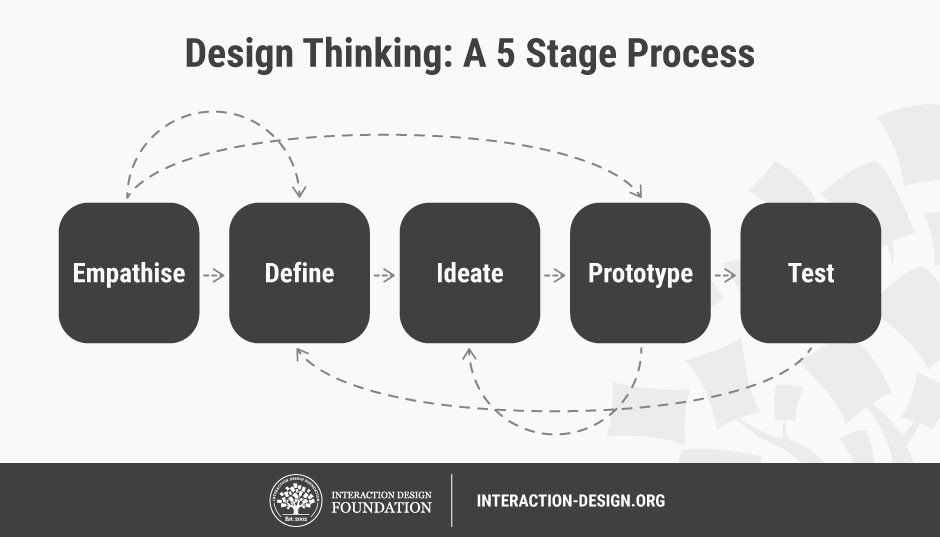Design Thinking: A Quick Overview — from interaction-design.org by Rikke Dam and Teo Siang
Excerpt:
To begin, let’s have a quick overview of the fundamental principles behind Design Thinking:
- Design Thinking starts with empathy, a deep human focus, in order to gain insights which may reveal new and unexplored ways of seeing, and courses of action to follow in bringing about preferred situations for business and society.
- It involves reframing the perceived problem or challenge at hand, and gaining perspectives, which allow a more holistic look at the path towards these preferred situations.
- It encourages collaborative, multi-disciplinary teamwork to leverage the skills, personalities and thinking styles of many in order to solve multifaceted problems.
- It initially employs divergent styles of thinking to explore as many possibilities, deferring judgment and creating an open ideations space to allow for the maximum number of ideas and points of view to surface.
- It later employs convergent styles of thinking to isolate potential solution streams, combining and refining insights and more mature ideas, which pave a path forward.
- It engages in early exploration of selected ideas, rapidly modelling potential solutions to encourage learning while doing, and allow for gaining additional insight into the viability of solutions before too much time or money has been spent
- Tests the prototypes which survive the processes further to remove any potential issues.
- Iterates through the various stages, revisiting empathetic frames of mind and then redefining the challenge as new knowledge and insight is gained along the way.
- It starts off chaotic and cloudy steamrolling towards points of clarity until a desirable, feasible and viable solution emerges.
From DSC:
This post includes information about popular design thinking frameworks. I think it’s a helpful posting for those who have heard about design thinking but want to know more about it.
What is Design Thinking?
Design thinking is an iterative process in which we seek to understand the user, challenge assumptions we might have, and redefine problems in an attempt to identify alternative strategies and solutions that might not be instantly apparent with our initial level of understanding. As such, design thinking is most useful in tackling problems that are ill-defined or unknown.Design thinking is extremely useful in tackling ill-defined or unknown problems—it reframes the problem in human-centric ways, allows the creation of many ideas in brainstorming sessions, and lets us adopt a hands-on approach in prototyping and testing. Design thinking also involves on-going experimentation: sketching, prototyping, testing, and trying out concepts and ideas. It involves five phases: Empathize, Define, Ideate, Prototype, and Test. The phases allow us to gain a deep understanding of users, critically examine the assumptions about the problem and define a concrete problem statement, generate ideas for tackling the problem, and then create prototypes for the ideas in order to test their effectiveness.
Design thinking is not about graphic design but rather about solving problems through the use of design. It is a critical skill for allprofessionals, not only designers. Understanding how to approach problems and apply design thinking enables everyone to maximize our contributions in the work environment and create incredible, memorable products for users.









